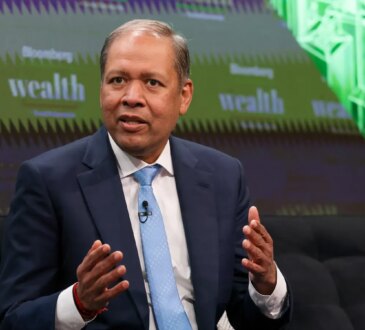
Salman Khan, President & CEO of The Gideon Group.
In the entertainment world, many projects never cross the finish line—not because of talent or creativity, but because the financing structures were never fit for purpose. I’ve spent most of my career structuring debt, equity and sovereign financing for large-scale industries—including aviation, energy and data centers—and I’ve found that the same principles can apply directly to film and content.
The Core Problem
Over the past decade, I’ve engaged with multiple production houses, actors, celebrities and singers, exploring ways to structure and finance their creative projects. The insights and relationships developed through those discussions have been extensive and valuable. At present, I’m in active discussions to raise a dedicated fund for a production house while also supporting a few friends in the industry to strengthen and scale their upcoming ventures.
Through this experience, I’ve learned that many creative ventures rely on fragmented funding, soft commitments and optimistic assumptions. In infrastructure, those weaknesses would be fatal. Nobody breaks ground on a $500 million power plant without an offtake agreement, milestone-based financing and a secured capital stack. If entertainment projects try to run without these foundations, even strong creative concepts risk stalling before reaching audiences.
Infrastructure-Grade Principles
There are three infrastructure-grade principles entertainment leaders can consider for financing:
1. Secure distribution first. In energy, a power purchase agreement secures the revenue floor. In entertainment, the equivalent could be a distribution or streaming deal that is legally binding. Without it, you’re speculating, and speculation isn’t financeable at scale.
2. Establish structured capital stacks. No infrastructure project relies on a single investor. Airports, solar farms and data centers are financed with a mix of equity, debt, guarantees and insurance. Film should be no different. Layered structures—such as tax credits, gap financing and insurance-backed presales—can help spread risk and open doors to institutional capital.
3. Practice recoupment discipline. Infrastructure investors demand clarity in repayment: who gets paid, in what order and under what terms. If film projects want institutional money, leaders should define repayment priority, downside protection and exit pathways with precision.
As I see it, streaming platforms and AI-driven content are creating a new “infrastructure moment” for entertainment. Content is no longer speculative—it’s the fuel driving global platforms and data ecosystems. The winners will be those who treat film not as art alone, but as an asset class. Applying infrastructure discipline isn’t about limiting creativity; it’s about unlocking scale.
Film Slates As De-Risked Structures
One powerful tool in this transition is the film slate model. Instead of financing movies one by one, slates spread risk across multiple productions, just like an infrastructure portfolio spans multiple projects. This can help de-risk outcomes, balance creative variability and make the package more attractive to serious capital.
Equally important is the way these films are released. By structuring the release calendar strategically—ensuring readiness after post-production, coordinating timing across distribution windows and pacing launches—studios can smooth revenue cycles and reduce volatility. It transforms the chaos of one-off productions into the predictability of an asset-backed pipeline.
Adding slate discipline may also help when negotiating with distributors or streaming platforms. Bundled offerings backed by structured finance might be more compelling than single titles because they guarantee volume, consistency and reduced delivery risk. This is how entertainment shifts from ad hoc deal-making to systematic industry building.
The Mandate
For leaders in this space, the direction is clear:
• Secure distribution before financing.
• Layer capital like infrastructure.
• Demand recoupment waterfalls.
• Build slates and release schedules strategically to reduce volatility.
The potential upside of applying these strategies isn’t just better financing. It’s the ability to build a repeatable, scalable model that turns creativity into a bankable industry—the same way power plants, airports and data centers have scaled.
The information provided here is not investment, tax, or financial advice. You should consult with a licensed professional for advice concerning your specific situation.
Forbes Business Council is the foremost growth and networking organization for business owners and leaders. Do I qualify?





